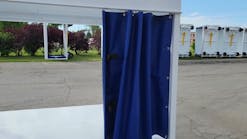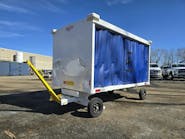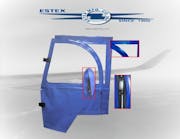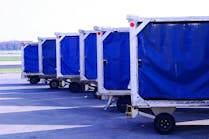Collecting ‘Predictive’ Safety Management Systems Data
Safety Management Systems (SMS) is an important new three-letter word from the International Civil Aviation Organization (ICAO). Federal Aviation Administration and national aviation authorities are following the ICAO guidelines and requiring SMS. For most airline and airline-related service organizations, an SMS can be a formalization of the many safety programs already in place.
This article describes a system that helps provide “predictive” safety data for SMS. The system involves employee participation to formally recognize not only safety threats, but also good processes within the company.
The system is called the Line Operations Safety Assessment (LOSA) There are two similar systems for ramp personnel and maintenance, but we’ll focus on the ramp in this article. (By the way, the term “assessment” was purposefully chosen since the industry wanted to separate LOSA from the traditional “audit.”)
WHAT IS LOSA?
LOSA is a way for employees to observe one another’s work. Although it is peer-to-peer observation, it is a formal process. LOSA is not new. Since the late 1990s, LOSA has evolved in flight operations and is widely used today. Line pilots, for example, trained to be LOSA observers, fly jump seat and observe the crew. The observer looks for excellent performance, but also observes whether threats and errors are present.
The LOSA observer does not record pilot names or information that could compromise anonymity. They merely observe and record threats, errors, and recovery from errors during normal operations. The observer is trained not to interfere with normal operations unless there is grave danger to people or property.
Those being observed know that the LOSA is not a classic “audit” and that LOSA data cannot attribute actions to an individual or crew. LOSA is a formal employee system that does real-time risk assessment using the threat and error management model.
The LOSA system for ramp is very different from that used on the flight deck. The philosophy and principles are the same, but the flight deck relies on open-ended text to record the observations. Pilots wrote complicated paragraphs that could be difficult to decode.
The ramp LOSA, on the other hand, uses structured observation checklists. (See “More On LOSA Process” sidebar.) The system for ramp comes complete with ready-to-use database and data analysis tools that are kept with the operator. There is no need for outside data storage and analysis. This ensures that company data are secure and that analysis does not require external consultants.
Figure 1 shows the characteristics of the LOSA systems used for maintenance and for ramp environments. It is a systematic means for observation of normal operations. The peer-trusted observers, as well as those observed, participate in LOSA as volunteers. All are trained to understand that LOSA data does not include names and the data are confidential.
Figure 1. Characteristics of a LOSA Program
LOSA is a joint effort by company management and labor to recognize early indications of threats and errors. Sometimes LOSA can be targeted to assess known challenges. In any case, the standards for confidentially always apply. The results of LOSA are also distributed to the workforce.
IMPLEMENTATION REQUIRES SUPPORT
LOSA implementation requires strong support from corporate leadership and from the workforce. It requires resources for personnel, training, data analyses, etc. The return on these investments includes an enhanced SMS program, new knowledge of daily risk, an increase in efficiency, and continuing safety. A return on investment tool is under development for use with the LOSA systems.
The development team of government and industry has developed and tested all necessary materials to support the implementation of LOSA for ramp.
That includes training documents and manuals, data collection and analyses forms and software, and materials to promote LOSA to the workforce. Figure 2 shows one example of the many posters available from the www.mrlosa.com website. This site also offers ways to obtain implementation support from participating industry and government partners.
Figure 2: Promoting LOSA At Work




